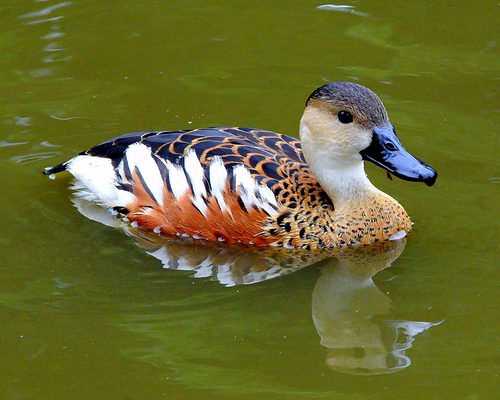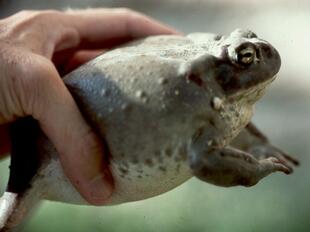
Plumed whistling duck, orGrass whistleduck(Dendrocygna eytoni)
Phylum —chordata
Class — aves
Order — anseriformes
Family — anatidae
Genus –dendrocygna
Appearance
Measuring 42–60 cm (16.5–23.5 in) and weighing around one kilogram (2.2 lb), it is a long-necked duck with brown upperparts, paler underparts and a white rump. The chest is chestnut with thin black bars, while long black-margined plumes arise from its flanks. Its bill and legs are pink, and its iris is yellow. The male and female are similar in appearance. The species has a characteristic lowered neck and short, dark, rounded wings while flying.
Habitat
Plumed whistlingducks occur across northern Australia, throughout Queensland and into New South Wales, in the upper Darling River basin and Murray & Murrumbidgee catchments.
Behavior
Plumed whistling ducks are highly gregarious and form large communal feeding and roosting flocks. However, adults appear to form long-term pair bonds, with partners remaining in constant contact within the flocks.
Diet
Plumed whistling ducks graze on tropical grasses. They pluck grass (like a goose) and also take food from the water by dabbling from the surface.
Reproduction
The plumed whistling duck breeds during the wet season, generally in January to March, although it can be later in April or, in a few cases, May. One brood is raised per season. The nest is a mattress of grasses or similar material in tall grass, or in or near vegetation as cover. 10 to 12 oval eggs are laid, measuring 48 x 36 mm; 14 or more have been recorded on occasion. Initially shiny and creamy-colored, they may become stained. The incubation period is around 30 days.
In captivity
Lifespan can reach 20 years.
Ducks of this genus are social species that get along peacefully with representatives of their own genus and those ones of other genera in large mixed groups on the same site, so it is possible to keep birds of different species in one spacious aviary outside the breeding season. It is only advisable to make sure that these are ducks of approximately the same size, since larger ones can make smaller ones go away from the feeder and drinker.
Ducks feel great on the territory where there are tall grasses, shrubs and trees and a reservoir at least 1 m deep, the size of which allows them to swim. The area of the fenced yard should correspond to the number of birds contained, providing it with the opportunity to retire and hide. Small shelters on the top of the open area in the form of sheds, huts and booths are necessary as shelters from birds of prey, bad weather, as well as for overnight stays. Building aviaries, you should take into account the desire of the bird to fly. Owners usually cover them from above or make regular trimming of the wings.
In winter, ducks, being mainly tropical inhabitants, need reliable protection from the cold. Capital buildings with deep straw bedding or a thick layer of sawdust will protect the bird from hypothermia and frostbite in the winter. Depending on the severity of the climate, it is necessary to provide a variety of ways to warm up the winter room when the temperature drops from 0 оС and below.
Wood ducks are mostly monogamous and nest in colonies, but during the breeding season it is necessary to settle birds of different species to avoid hybridization. Mixing of species occurs rarely, and only when there is an excess of sexually mature males that do not have a permanent pair. On the nesting site, various locations are organized for laying eggs: boxes and houses on the ground,which also can be raised 1 meter or higher from its surface.
It is quite simple to provide full nutrition to wood ducks in captivity. A variety of grain mixes and pellets are suitable for feeding them. Ducks need drinkers with a sufficient amount of clean water, especially if there is not even a small pond for swimming.
Ducklings grow well when the keepers start giving them standard feeds, and enjoy eating chopped lettuce or spinach leaves. Artificially bred сhicks sometimes do not eat well during their first days, so keepers add boiled eggs or mealworms to their food. It is important to provide pairs of ducks with a brood with the opportunity to graze on fresh grass or give access to shallow reservoirs overgrown with aquatic vegetation (duckweed, reeds, etc.). Such conditions of keeping contribute to better preservation and growth of young birds. Daily bathing under the control of adult birds is safe.
 Russian
Russian
 English
English
























